Last Updated on 27/10/2025
The term “Jyotirlinga” is a combination of two Sanskrit words: Jyoti and Linga. There are twelve Jyotirlingas in India, and they are some of the most revered abodes of Lord Shiva. They include the snow-covered Kedarnath to the Kashi Vishwanath Temple by the Ganga River. Individuals across the world visit to pray and experience the immense power of Shiva. These are spiritual centers that are not only filled with divine power but are also famous for their historical significance and beautiful buildings. Simply in words, every Jyotirlinga demonstrates some particular aspect of the cosmic nature of Shiva.
It is a hardcore belief of many Hindus that by visiting all twelve Jyotirlingas, they will be able to get rid of their bad karma. They also believe that when an individual worships in these temples, it aids him/her in attaining the ultimate spiritual liberation known as moksha. Planning to visit any of these sites? If so, then continue scrolling down this well-drafted guide to the 12 Jyotirlingas of Lord Shiva – including temple times, mythological and historical significance, and the pilgrimage route. I have tried to include every single information, including their divine origins, nearby attractions, and ways to stay spiritually connected through heartfelt offerings and devotion. Moreover, in this blog, we will go through the necessary details and learn why they are so special.
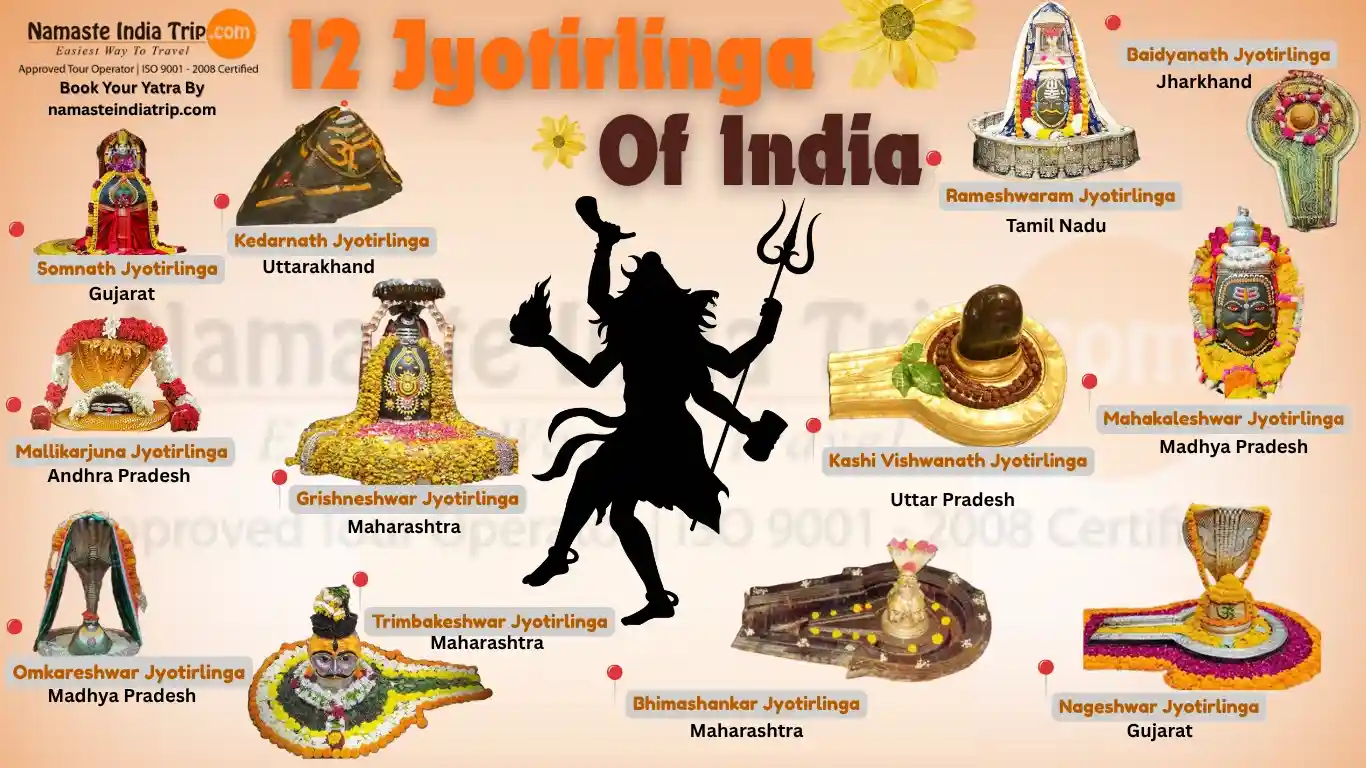
The 12 Jyotirlingas and Their Location and Opening and Closing Time
Millions of believers worldwide visit the twelve Jyotirlingas of India, which boast the highest sanctity to Lord Shiva. It is claimed that these temples emit his everlasting presence, providing the seekers with a chance to discover inner peace, undergo spiritual awakening, and become closer to the Supreme.
| Name |
City |
State |
Directions Faced by Jyotirlingas |
Opening Time |
Closing Time |
| Somnath |
Prabhas Patan |
Gujarat |
East |
6:00 AM |
9:00 PM |
| Mallikarjuna |
Srisailam |
Andhra Pradesh |
East |
4:30 AM |
10:00 PM |
| Mahakaleshwar |
Ujjain |
Madhya Pradesh |
South (Dakshin Mukhi) |
4:00 AM |
11:00 PM |
| Omkareshwar |
Mandhata Island |
Madhya Pradesh |
East |
5:00 AM |
9:30 PM |
| Kedarnath |
Kedarnath |
Uttarakhand |
West |
4:00 AM (May–Nov) |
9:00 PM (May–Nov) |
| Bhimashankar |
Pune (Khed) |
Maharashtra |
East |
5:00 AM |
9:30 PM |
| Kashi Vishwanath |
Varanasi |
Uttar Pradesh |
East |
3:00 AM |
11:00 PM |
| Trimbakeshwar |
Trimbak |
Maharashtra |
East |
5:30 AM |
9:00 PM |
| Baidyanath |
Deoghar |
Jharkhand |
East |
4:00 AM |
9:00 PM |
| Nageshwar |
Dwarka |
Gujarat |
West |
6:00 AM |
9:00 PM |
| Rameshwaram |
Rameshwaram |
Tamil Nadu |
East |
5:00 AM |
9:00 PM |
| Grishneshwar |
Ellora |
Maharashtra |
East |
5:30 AM |
9:30 PM |
1- Somnath (Gir, Gujarat)
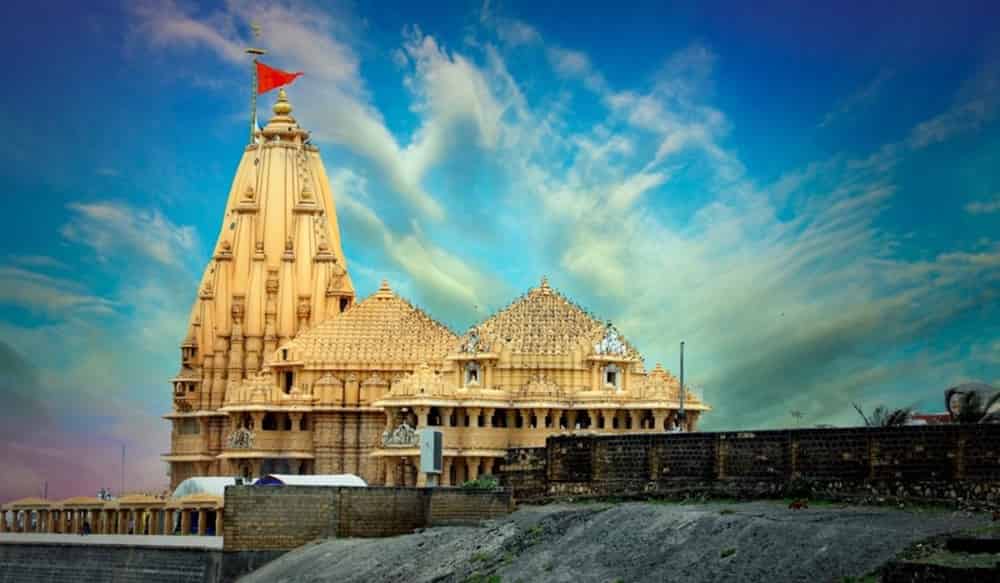
Somnath Jyotirlinga is considered one of the most revered Shiva shrines in India, where pilgrims from all across the globe visit. It is in Prabhas Kshetra, which is near Veraval in Gujarat, and it is very spiritual and historically significant. It is believed that Somnath is one of the oldest temples in India. The rebuilding has been done 16 times, demonstrating the resilience and passion of people.
According to the Shiva Purana, the Moon god, Chandra Dev, was cursed by his father-in-law, Daksha Prajapati, to fail in shining. Chandra prayed to Lord Shiva to end the curse.
Shiva was pleased with the devotion of Chandra and manifested himself in the form of a Jyotirlinga, and the Moon god shone brightly once more. The temple is named Somnath, which means the Guardian of the Moon.
- Nearby Attractions: Bhalka Tirth, Gita Mandir, Triveni Sangam, and Somnath Beach
- Highlight: Daily Light & Sound Show from 8:00 PM to 9:00 PM
- Tickets: ₹30 for adults | ₹10 for children (below 10 years)
2- Mallikarjuna (Srisailam, Andhra Pradesh)
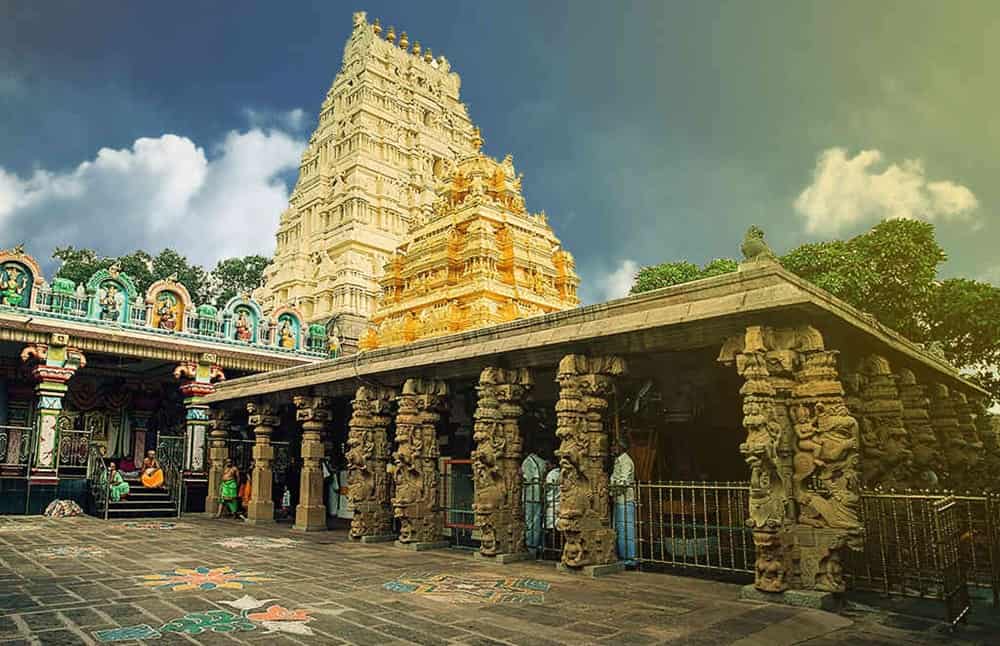
Located beautifully in the majestic Nallamala hills, Mallikarjuna Temple is another heavily crowded pilgrimage in India. This revered shrine is dedicated to Lord Shiva, and devotees can also seek the blessings of Goddess Parvati. In addition, the pilgrimage is believed to be one of the most astonishing 18 Maha Shakti Peethas. Legends tell that Lord Shiva and goddess Parvati came here as Mallikarjuna and Bhramaramba when they wanted to stay close to their son, Kartikeya. This is what makes it the only complex of temples in India that contains both a Jyotirlinga and a Shakti Peetha.
- Nearby Attractions: Bhramaramba Devi Temple, Srisailam Dam, Sakshi Ganapati Temple, Akkamahadevi Caves
- Highlight: The gold-plated tower (Vimana) and the Sahasra Linga with 1000 tiny Lingas carved.
- Tickets: No entry fee
3- Mahakaleshwar (Ujjain, Madhya Pradesh)
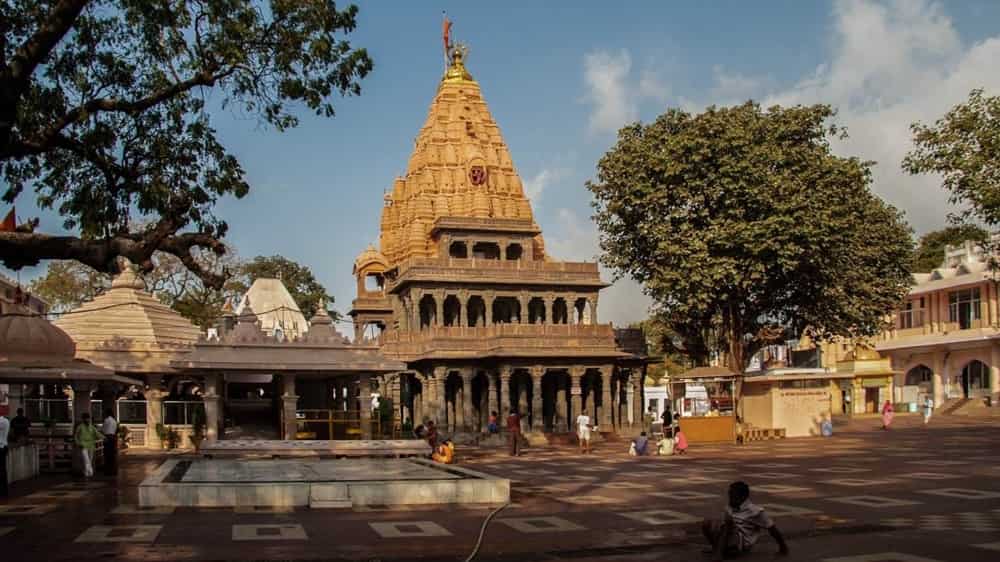
The Mahakaleshwar Temple is one of the most revered temples of Lord Shiva located in Ujjain, Madhya Pradesh. It is among the 12 Jyotirlingas or places of worship of Shiva in the form of a self-manifested lingam. The temple is situated on the bank of the sacred River Shipra and draws the attention of devotees and pilgrims worldwide. Mahakaleshwar is unique as the lingam is considered to be Swayambhu, i.e., self-grown, and it emits the divine energy.
The temple is also south-facing and is thus popularly known as Dakshin Mukhi, which is an uncommon south direction of Jyotirlingas. It is a mix of Bhumija, Maratha, and Chalukya architecture and signifies the splendor of the old Indian art. Moreover, this astonishing temple is also a focal point of the celebration of the festival of Maha Shivaratri, where Ujjain is filled with devotion and happiness.
- Nearby Attractions: Kal Bhairav Temple, Sandipani Ashram, and Ram Ghat
- Highlights: The temple rituals also consist of the daily Bhasma Aarti, which takes place at dawn, and it involves the use of sacred ash, symbolizing the destruction and creation cycle.
- Tickets: No entry fee
4- Omkareshwar (Khandwa, Madhya Pradesh)
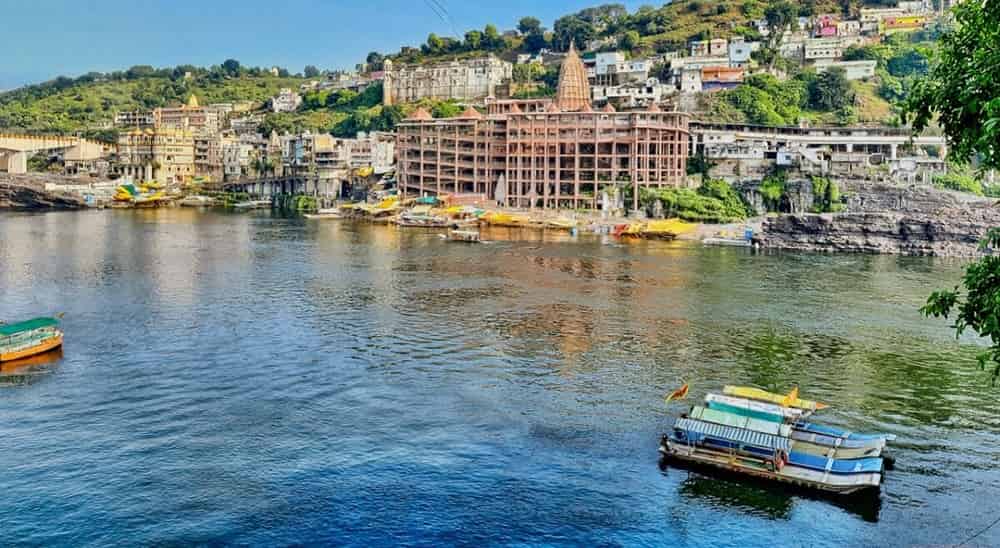
Omkareshwar Temple is located on the Mandhata Island on the Narmada River within Khandwa in Madhya Pradesh. The island itself forms a sacred Hindu shape of the Om symbol, and, as a result, the name of the place, called Omkareshwar, meaning Lord of Om. This is a special geography and spirituality that has made it one of the most sacred pilgrimage places in India. Omkareshwar is an eternal icon of the devotion, tranquility, and spiritual eternity of Lord Shiva.
The architecture of the temple is awe-inspiring as the complex is decorated with beautiful carved pillars, fancy domes, and stone sculptures. The principal lingam of Lord Shiva, now worshiped as Omkareshwar, is considered to be Swayambhu or self-manifested, and it emits the energy of the god. Thousands of devotees come to visit the temple all year round, more so during the festival of Maha Shivaratri, when the region becomes full of hymns of Har Har Mahadev.
- Nearby Attractions: Siddhanath Temple, Mamleshwar Temple, and Gauri Somnath Temple
- Highlights: “Om” shaped island and exciting boat rides.
- Tickets: Free entry to the temple, but you will have to pay for boat rides.
5- Kedarnath (Rudraprayag, Uttarakhand)
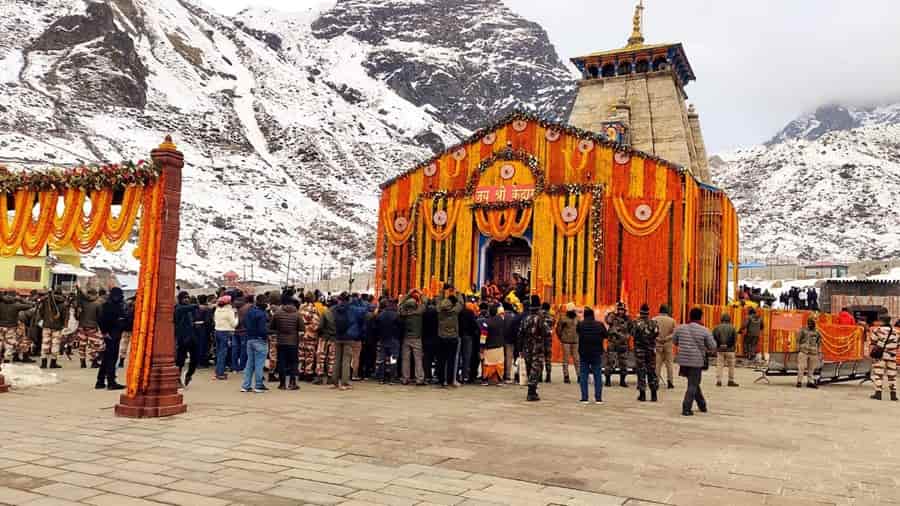
Kedarnath Jyotirlinga is located in the district of Rudraprayag of Uttarakhand and is one of the twelve Jyotirlingas that is open only for 6 months. Additionally, it is an important destination of the Chhota Char Dham trek. It lies hidden in the Himalayas, 3,583 meters above sea level, along the Mandakini River, and snowy mountains and spectacular views surround you. People believe that Lord Shiva appeared here in the form of a Jyotirlinga to wipe the sins of the Pandavas who fought at Kurukshetra.
The Pandavas initially assembled the stone structure of the temple and subsequently restored it by Adi Shankaracharya in the 8th century, making it clean and powerful. Within the main hall, there is a cone-shaped lingam, which is basically Lord Shiva in his Sadashiva form. Due to extreme weather conditions, the temple remains open between April and November; after which the idol is relocated to Ukhimath during winter.
- Nearby Attractions: Gaurikund, Vasuki Tal, and Bhairav Nath Temple
- Highlights: impeccable surrounding vista and spiritual vibes
- Tickets: No entry fee; donations as per your wish.
6- Bhimashankar (Pune, Maharashtra)
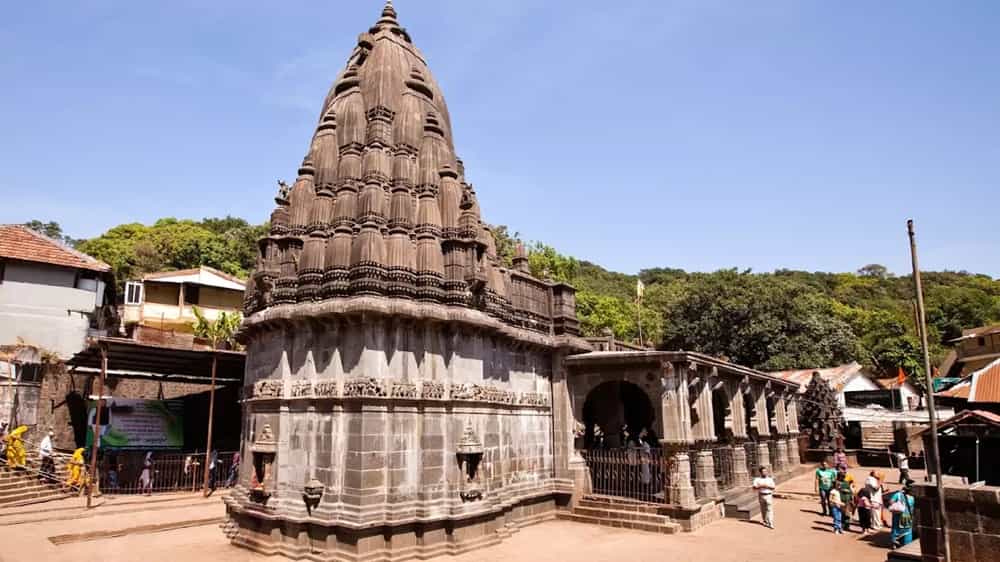
The temple stands in the middle of a dense forest and on hills rising approximately 3,250 feet high. It provides a peaceful area to pray and also a scenic way to view nature. According to people, this is where Lord Shiva took the form of Bhairava to fight a battle against the demon Tripurasura. His sweat became the Bhima River after the battle, hence the name Bhimashankar. The temple is constructed in Nagara fashion with elaborate carvings on stone. It contains a peaceful sanctum in which the Shiva lingam is housed.
The Bhimashankar Wildlife Sanctuary surrounds the temple and has various varieties of flora and fauna. It is also the habitat of the Giant Indian Squirrel, also known as Shekru. Besides being a major pilgrimage, it is also a preferred trekking destination. A lot of people gather to pray and share time with nature. Maha Shivaratri is particularly a busy time in the temple when thousands of pilgrims gather to seek blessings.
- Nearby Attractions: Hanuman Lake, Nagphani Point, Sakshi Ganapati Temple
- Highlights: Nagara-style architecture
- Tickets: No entry fee; open to all devotees year-round.
7- Kashi Vishwanath Temple (Varanasi, Uttar Pradesh)
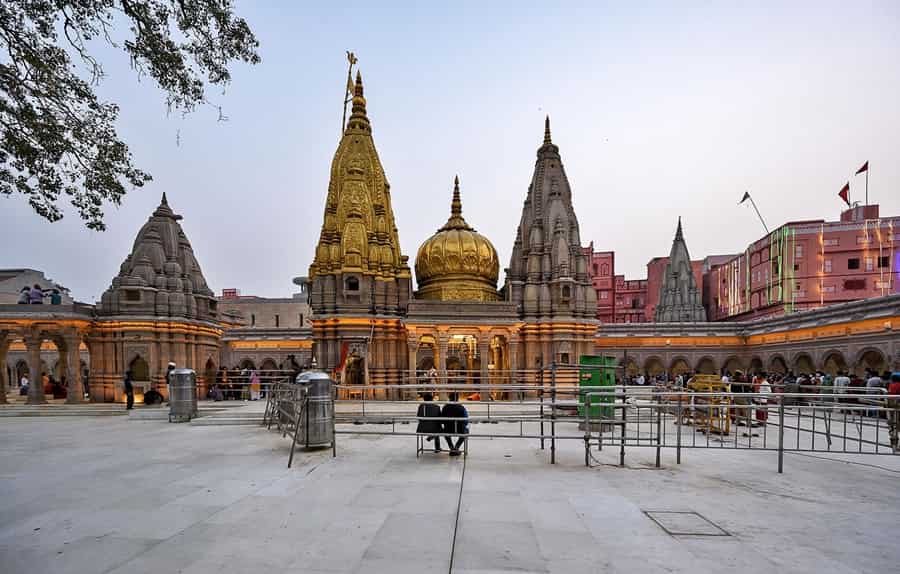
It is located on the west bank of the sacred Ganga River and is among the twelve Jyotirlingas, and thus, the preferred destination for spiritual seekers. Many believe that a visit to Kashi Vishwanath, followed by bathing in the Ganga, will liberate you from the cycle of birth and death.
The temple of Vishweshwara, in other words, Vishwanath, the chief god within, is represented by a black stone lingam. Queen Ahilyabai Holkar of Indore rebuilt the current building in 1780, but the domes are ornamented with fancy gold plating, and this is why people refer to the structure as the Golden Temple of Varanasi. In recent times, the Kashi Vishwanath Corridor project has simplified access to the temple by accessing it directly through the Ganga Ghats.
The temple remains buzzing all year round. Festive seasons, such as Maha Shivaratri and the month of Shravan, attract enormous crowds. All people are chanting Har Har Mahadev, which makes the air full of divine power and endless reverence.
- Nearby Attractions: Ghats, Banaras Hindu University (BHU), and Sarnath
- Highlights: Boat ride
- Tickets: No entry fee
8- Trimbakeshwar Temple (Nashik, Maharashtra)
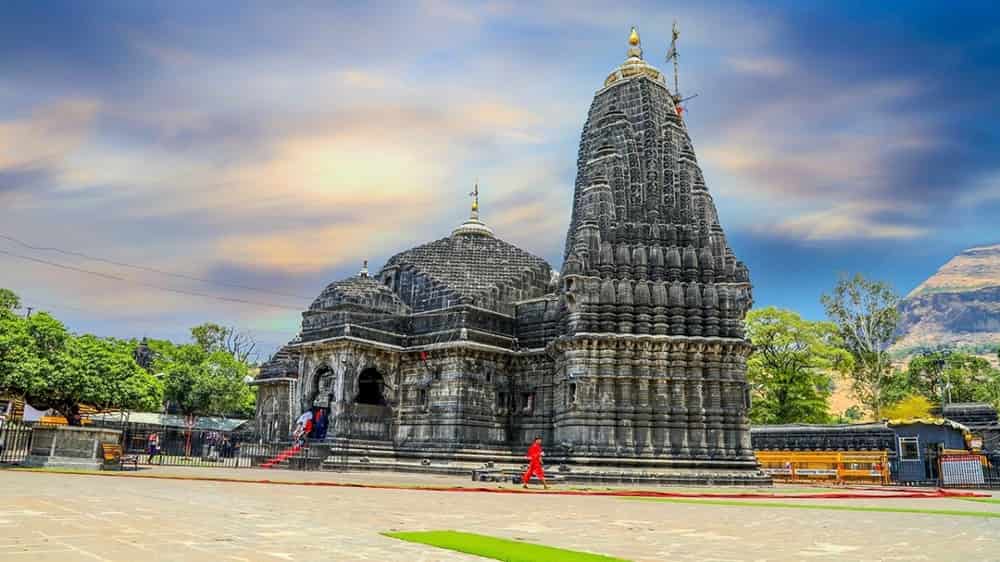
Located beautifully in the Nashik district of Maharashtra, Trimbakeshwar is one of the most crowded Jyotirlingas in India. This is so because the lingam established here represents the divine power of the trinity (Brahma, Vishnu, and Shiva). Besides this, as the pilgrimage is situated near the Godavari River, it makes it a must-visit Hindu site. Moreover, the black stone façade and ornate domes of this ancient architecture were built in the Hemadpanthi style.
In addition to this, the pilgrimage is believed to be the same place where sage Gautam Buddha and his wife Mata Ahalya pleased Lord Shiva and achieved the blessing of immortality.
- Nearby Attractions: Brahmagiri Hill, Neel Parbat, and Anjaneri Fort
- Highlights: Kushavarta Kund, a holy tank where pilgrims take a dip.
- Entry Fee: There is no fee; however, you are free to donate willingly.
9- Vaidyanath (Deoghar, Jharkhand)
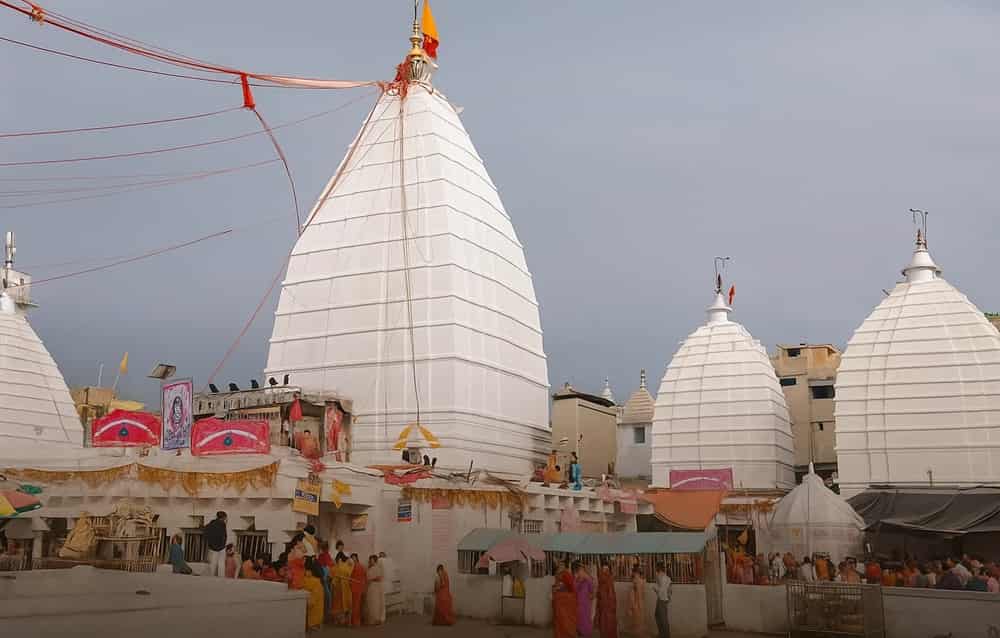
Popularly called Baidyanath Dham, Viadyanath Temple is one of the most explored Jyotirlingas in North India. According to mythological tales, this place is linked to Ravana, who devoted his ten heads to Lord Shiva to get invincibility. His deep devotion compelled Lord Shiva to appear and bless him. The temple complex is quite simple yet fills devotees with a strong spiritual feel. Moreover, if I talk about its architecture, then it has a tall Shikhara (temple tower) and many small shrines around the main temple.
If you feel connected with this place, then do check out our well-curated and budget-friendly Baidyanath Dham tour packages.
- Nearby Attractions: Tapovan Caves, Basukinath Mandir, and Naulakha Mandir
- Highlight: Shravani Mela, in which millions of Kanwariyas visit the temple.
- Entry Fee: There is no charge to enter the temple, but if you want to save your time and energy, then opt for the VVIP pass.
10- Nageshwar Jyotirlinga (Dwarka, Gujarat)
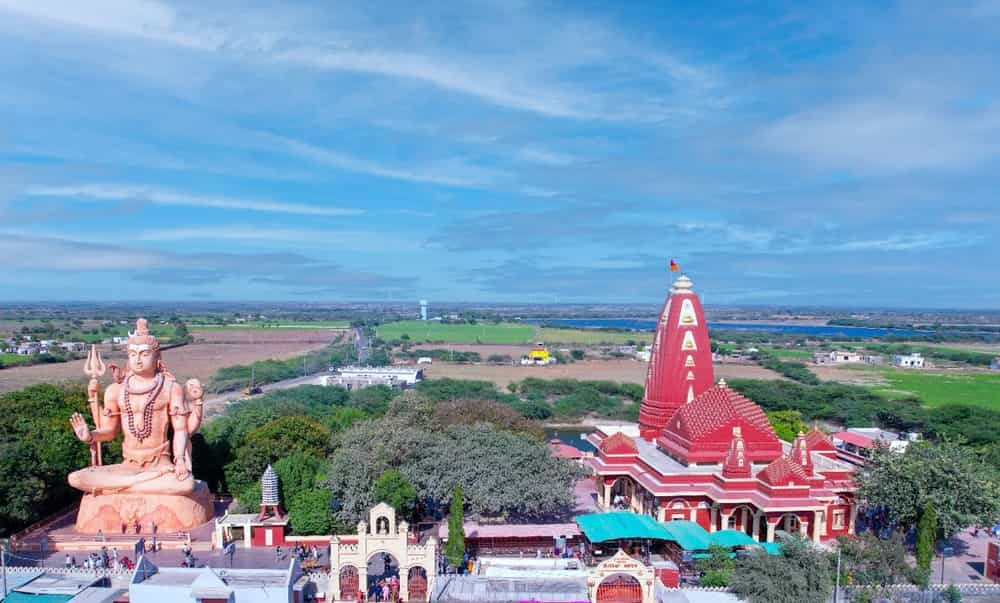
Located gracefully on the coast of Saurashtra, Nageshwar Temple holds immense spiritual significance in Hinduism. It represents a shield against every poison and negativity. In Hindu mythology, Lord Shiva, in the form of Nageshwar Mahadev, came here to protect his devotee, Supriya, against the demon Daruka. The name of the temple is based on the Sanskrit word Naga, which means serpent, and shows the association with protection and transformation.
The unique Shiva lingam of the temple is crafted from a smooth, dark stone that emanates divine power. Worshippers believe that worshipping at this place leaves them free from fear and evil spirits and gives them serenity and inner strength. The temple also boasts a 25-meter-tall statue of Lord Shiva, which is serene and majestic in the backdrop of the Arabian Sea.
- Nearby Attractions: Gomti Ghat, Rukmini Temple, and Dwarkadhish Temple
- Highlights: huge Shiva statue and the cool, gentle breeze coming from the coast.
- Entry Fee: no fee
11- Ramanathaswamy (Rameswaram, Tamil Nadu)
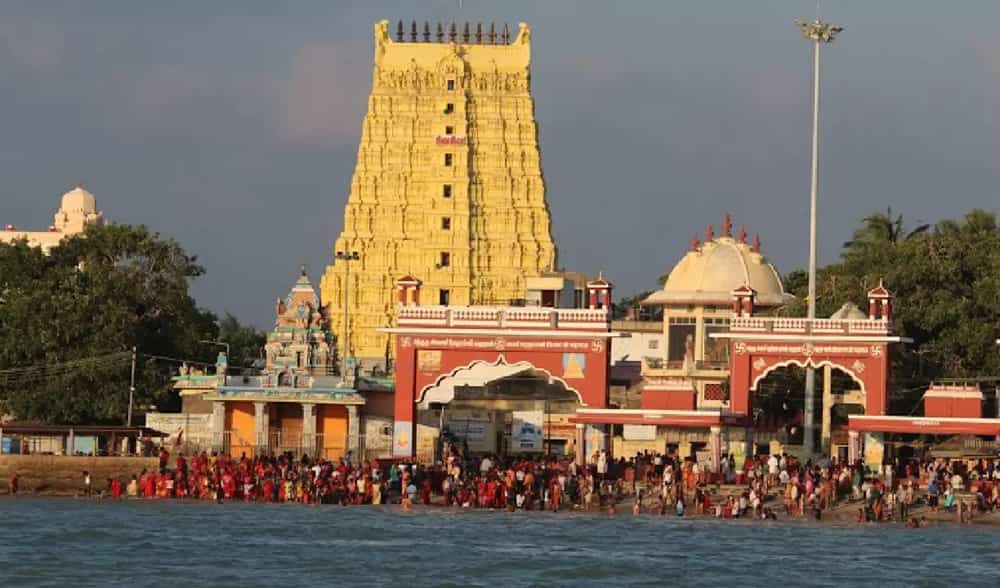
A major pilgrimage site for Shiva followers, Ramanathaswamy is also famous among travelers because of its beautiful Dravidian style, long halls, and well-carved pillars. It is said that Lord Rama prayed here to Lord Shiva to forgive him for killing Ravana. He then installed the lingam called Ramanathaswamy in the temple. The holy water pools referred to as the 22 Theerthams are said to purify the devotees of sin. The temple is on the serene Island of Rameswaram and demonstrates the proximity of both lord Vishnu and lord Shiva. It attracts thousands of pilgrims from around the world to feel spiritual freedom and peace.
- Nearby Attractions: Adam’s Bridge, Agni Theertham, and Dhanushkodi
- Highlights: majestic corridor of the temple
- Entry Fee: You can enter the temple without paying any charge
12- Grishneshwar (Aurangabad, Maharashtra)
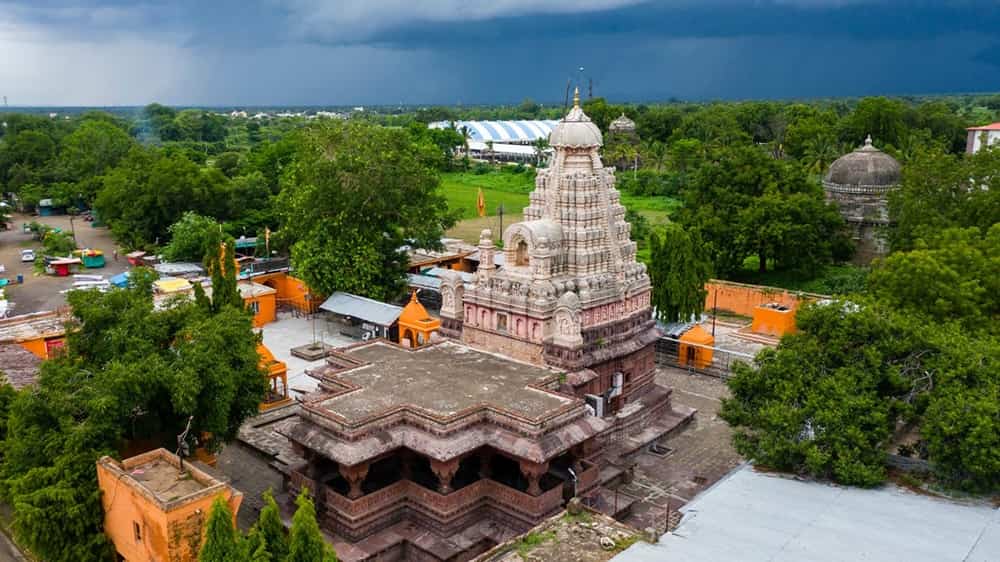
Built in the South Indian architectural style, Grishneshwar is the twelfth Jyotirlinga of Lord Shiva. The word Grishneshwar is translated as the Lord of Compassion. There is a common perception that by praying in this temple, people can make their wishes come true and get rid of bad karma.
As per Hindu mythology, the place is associated with Kusuma, who used to come here daily to adore a Shiva Lingam by placing it in a water tank. Kusuma prayed to Lord Shiva with heartfelt devotion after the death of her son. Lord Shiva came there, restored her son’s life, and assured them that he would remain there permanently as Grishneshwar Jyotirlinga. What makes this temple unique is that you can touch the statue and perform special pujas like Rudrabhishek.
- Nearby Attractions: Bibi Ka Maqbara, Ellora Caves, and Daulatabad Fort
- Highlights: impeccable temple architecture
- Entry Fee: Entry is completely free for all devotees.
Suggested Tour:
Frequently Asked Questions (FAQs)
Q-1: What are the 12 Jyotirlingas?
Ans: These are the twelve sacrosanct temples of Lord Shiva where he is adored as a self-manifold lingam of light. The spiritual and historical value of each of the temples is unique and interesting.
Q-2: What are the five must-visit Jyotirlingas?
Ans: Somnath, Mallikarjuna, Mahakaleshwar, Kedarnath, and Kashi Vishwanath are regarded as the most important. They became well-known due to their divine connotation and ancient tales.
Q-3: Which is the most divine and powerful Jyotirlinga?
Ans: Each of the Jyotirlingas is divine. However, Kashi Vishwanath and Somnath are particularly worshipped since they have been associated with freedom and eternal power.
Q-4: In which direction are these temples located?
Ans: The majority of them are facing towards the east, a pose of purity and enlightenment. Mahakaleshwar faces south. Kedarnath and Nageshwar are turned westwards.
Q-5: Is there a 13th Jyotirlinga?
Ans: Officially, there are only 12. But Gupteshwar in Mauritius is occasionally referred to as the symbolic 13th Jyotirlinga.
Q-6: How important is it to explore all 12 Jyotirlingas?
Ans: It is said that by visiting all 12, one cleanses their soul, pulls away sins, and acquires moksha (liberation).
Q-7: Is it possible to cover all these sites in one trip?
Ans: Yes, the 12 Jyotirlingas can be visited in a single journey by a clockwise journey through India, starting with Somnath in Gujarat and ending with Rameshwaram in Tamil Nadu.
Q-8: Are women allowed to enter these temples?
Ans: Of course, women are also allowed to pay visits and venerate at all Jyotirlinga temples. They are not restricted to an invitation.
Q-9: When is the best time to visit?
Ans: It is best to plan your trip to any of these sites on Mahashivratri or in the month of Shravan (July -August).
Q-10: Is there any special connection or link between these Jyotirlingas?
Ans: Yes, they are spiritually united. They exhibit various expressions of the infinite power of Lord Shiva.














 Call
Call WhatsApp
WhatsApp Enquiry
Enquiry